Ricefield bulrush identification and control
Information about the noxious weed ricefield bulrush. Ricefield bulrush is also known by its scientific name, Schoenoplectus mucronatus.
About this weed
Ricefield bulrush is a regulated Class A noxious weed. This means eradication is required state-wide. Ricefield bulrush is also on the Washington quarantine list and it is illegal to buy, sell, or offer it for sale in the state.
Ricefield bulrush is known as Schoenoplectus mucronatus and it is in the sedge family. Its other scientific name is Schoenoplectiella mucronata. Other common names include bog bulrush and rough-seed bulrush.
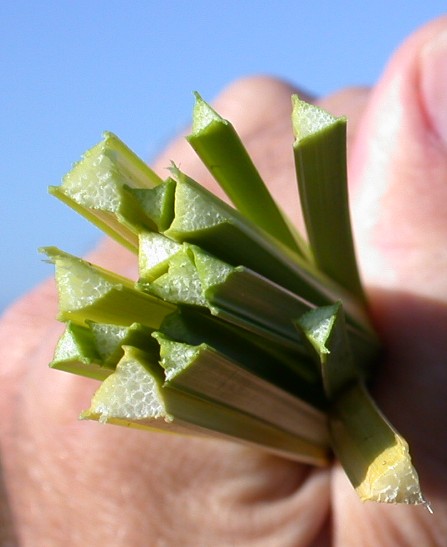
Why it's a problem
It is a problematic weed in many countries, especially rice fields and other areas with moist soils (for example, wetlands and ditches). Its resistance to herbicide makes it difficult to control.
Plant description
Ricefield bulrush is a wetland perennial (2+ year life cycle) sedge with triangular stems. It can grow two to three feet tall at maturity. It is native to parts of Europe, Africa, and Asia. Plants grow in wet, typically disturbed, areas such as rice fields, wetlands, and ditches.
At the top of stems are clusters of 4-20 spikelets (scaly flowers), flowers start off light green, mature to rust colored with greenish centers, then turn brown. Each scale of the flowers can mature into a blackish brown seed come fall. Beneath each cluster is a stiff pointed leaf, aka bract, which may look like a continuation of the stem. Bracts can be 0.5 to 4 inches long.
Ricefield bulrush does not have true leaves. Each stem has 1-2 reduced, bladeless sheaths – leaf-like base that grows almost flush to the stem. Multiple stems grow in dense clumps.
It reproduces by seed, as well as via rhizomes (underground sideways spreading root systems) and stolons (above ground spreading stems that re-root and grow new plants), making it especially difficult to control.
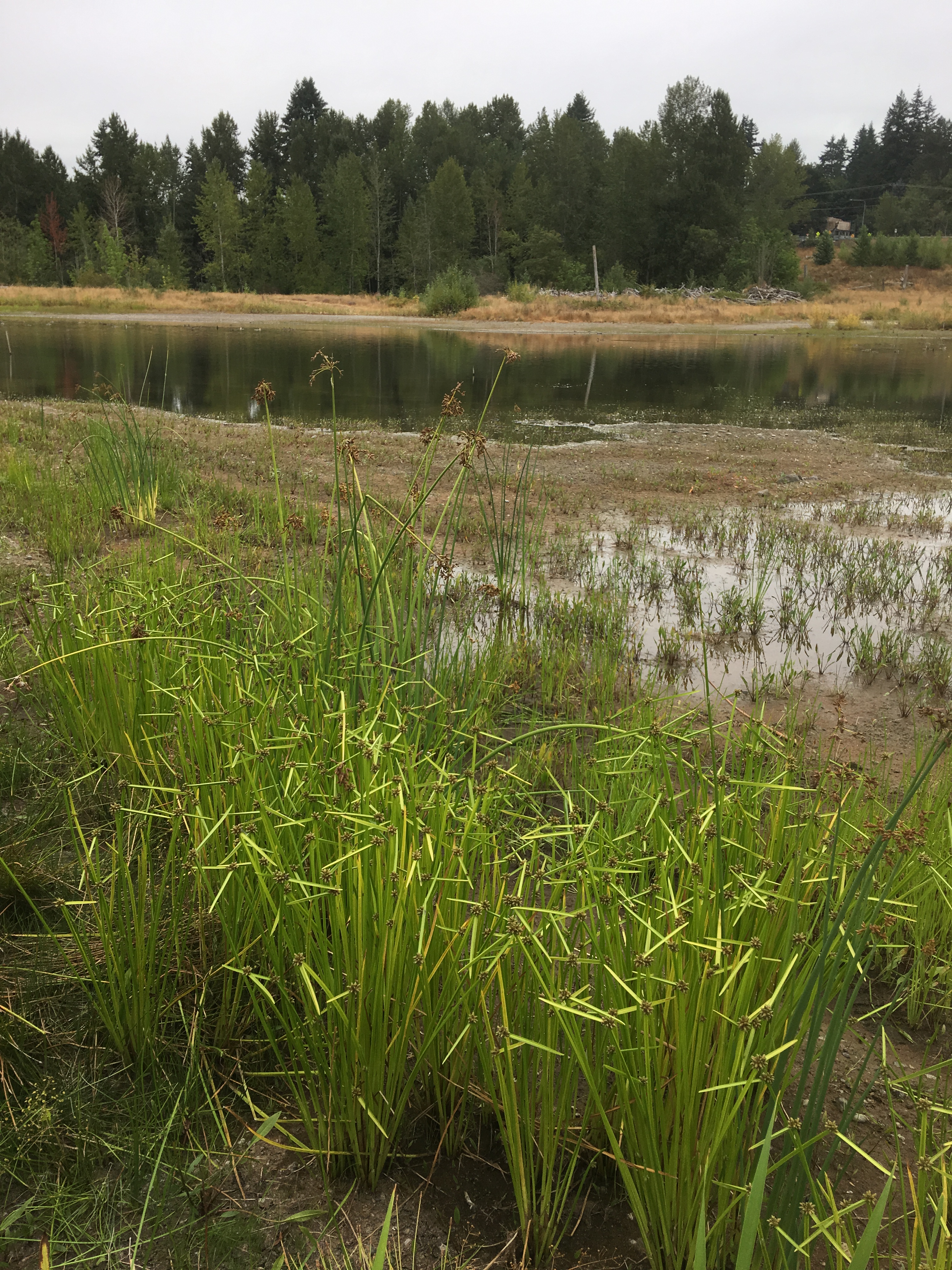


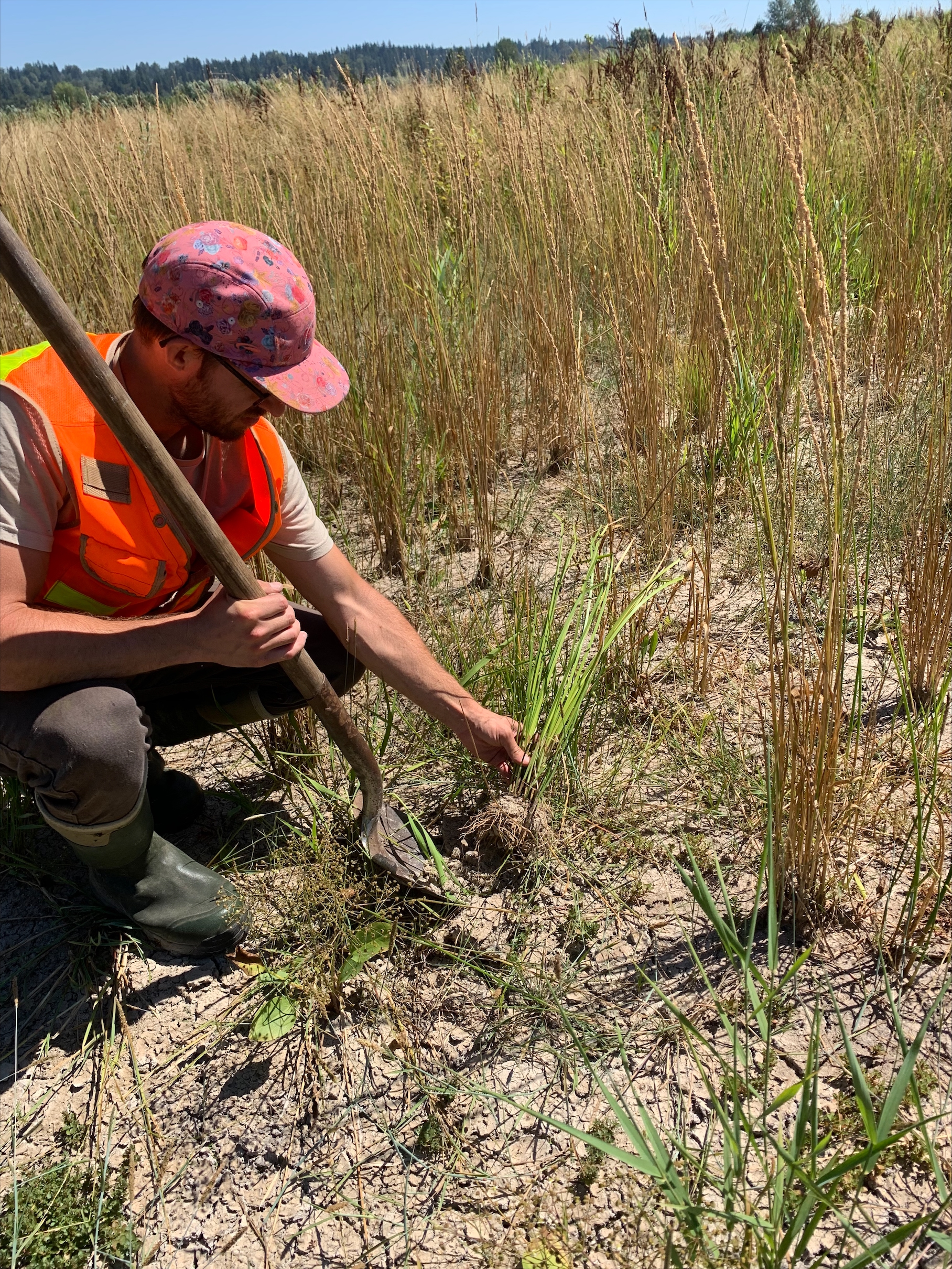
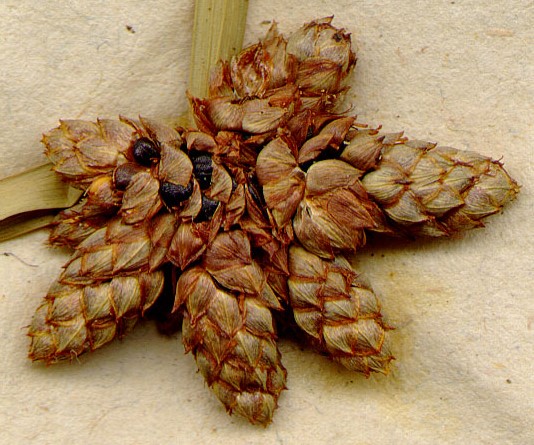
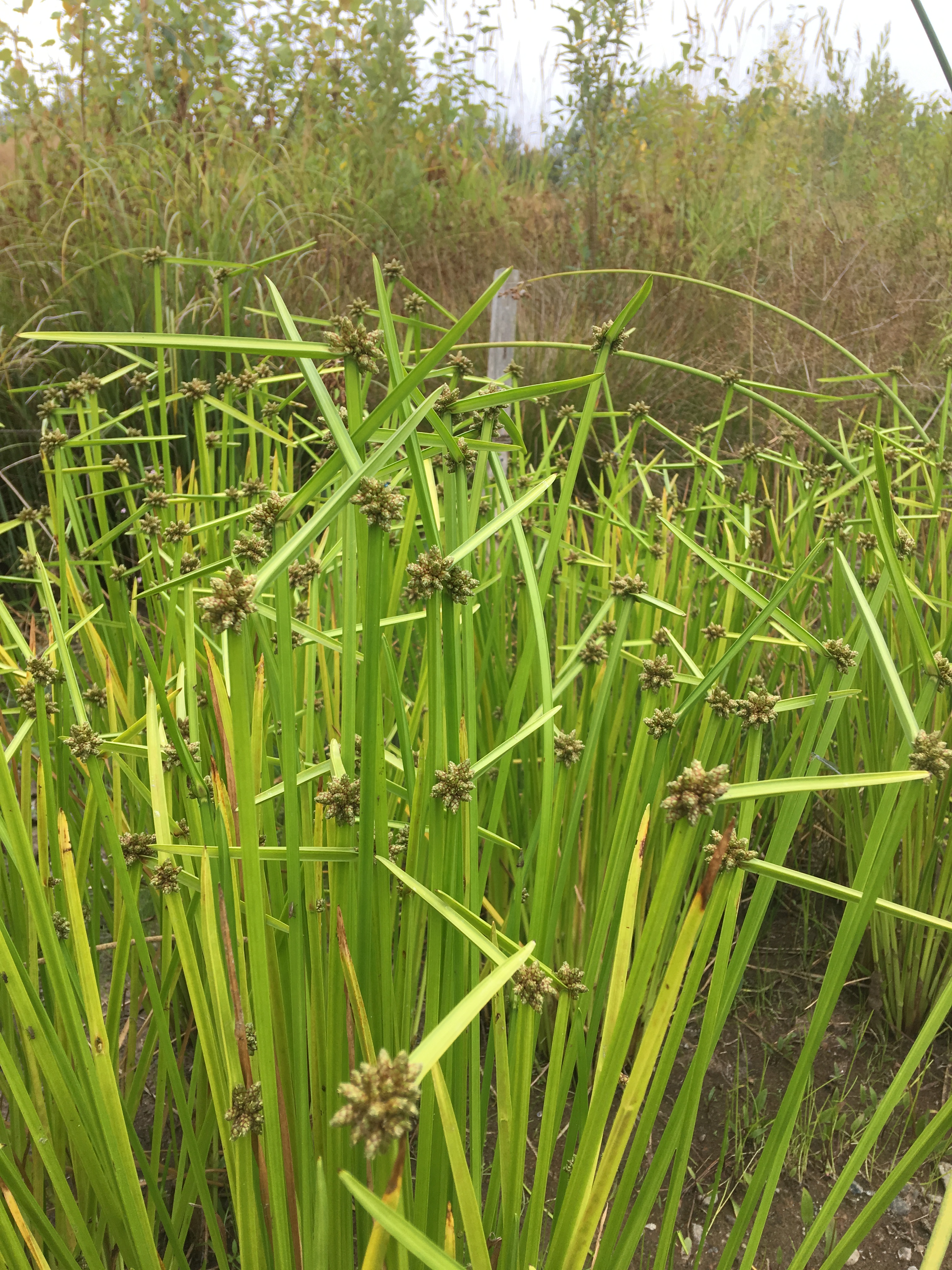
Be aware of look-alike plants
Ricefield bulrush can be confused for the following native sedges:
What to do if you find it
Property owners are required to control ricefield bulrush on lands that they manage. Please notify us if you see ricefield bulrush growing in King County. Our program staff can provide the property owner or appropriate public agency with site-specific advice on how best to remove it. We map all known locations of regulated noxious weeds such as ricefield bulrush. Mapping helps us and others locate new infestations in time to control them. Because ricefield bulrush is in limited areas in the state, eradication is possible.
Control methods
We recommend using a combination of methods to control noxious weeds. In areas with few weeds, it is important to act quickly before they become harder to control. Make a long-term plan as it often takes several years to get rid of most weeds. Start in the least infested areas first and then move into more heavily infested areas.
Manual control
Hand pulling is labor intensive but effective.
Cultural control
Crop rotation that allows the field to completely dry up can control ricefield bulrush.
Better water and land management can also help control this species. Rice straw as mulch keeps fields moist which prevents rhizomes (root system that spreads outwards and can grow new stems) and tubers (thickened underground part of a stem that stores nutrients, for example, potato) from drying out and creates a barrier from seed eating birds and mammals.
Chemical control
Stay safe when using herbicide:
- Always read the label before use.
- Wear a long-sleeved shirt, long pants, shoes, and eye protection.
- Follow state and local regulations.
Ricefield bulrush has a documented resistance to herbicides but there are a few exceptions. Foliar herbicides such as glyphosate can be impactful in the right setting.
See the PNW Pest Management Handbook for the most up to date and specific method for chemical control of ricefield bulrush.
Avoid spraying where there is a chance that herbicide will enter a waterway or wetland unless you are using a state-approved aquatic herbicide and have the required permits and licenses to do so. Use of pesticides in water is regulated in Washington state. See Washington Department of Ecology Aquatic Pesticide Permits for details.
For more information or a site-specific control recommendation in King County, contact the noxious weed program. For information in other counties in Washington state, contact your local weed board or your local cooperative extension office.
Disposal instructions
Ricefield bulrush can spread via seed, rhizome (root system that spreads outwards and can grow new stems), and stolon (horizontal plant stem that can take root and form new plants). Tubers (thickened underground part of a stem that stores nutrients, for example, potato) grow along the stolons. Bag and dispose of these plant parts. Compost the rest of the plant.
Washington State Noxious Weed Control Board pamphlet on noxious weed disposal

 Translate
Translate